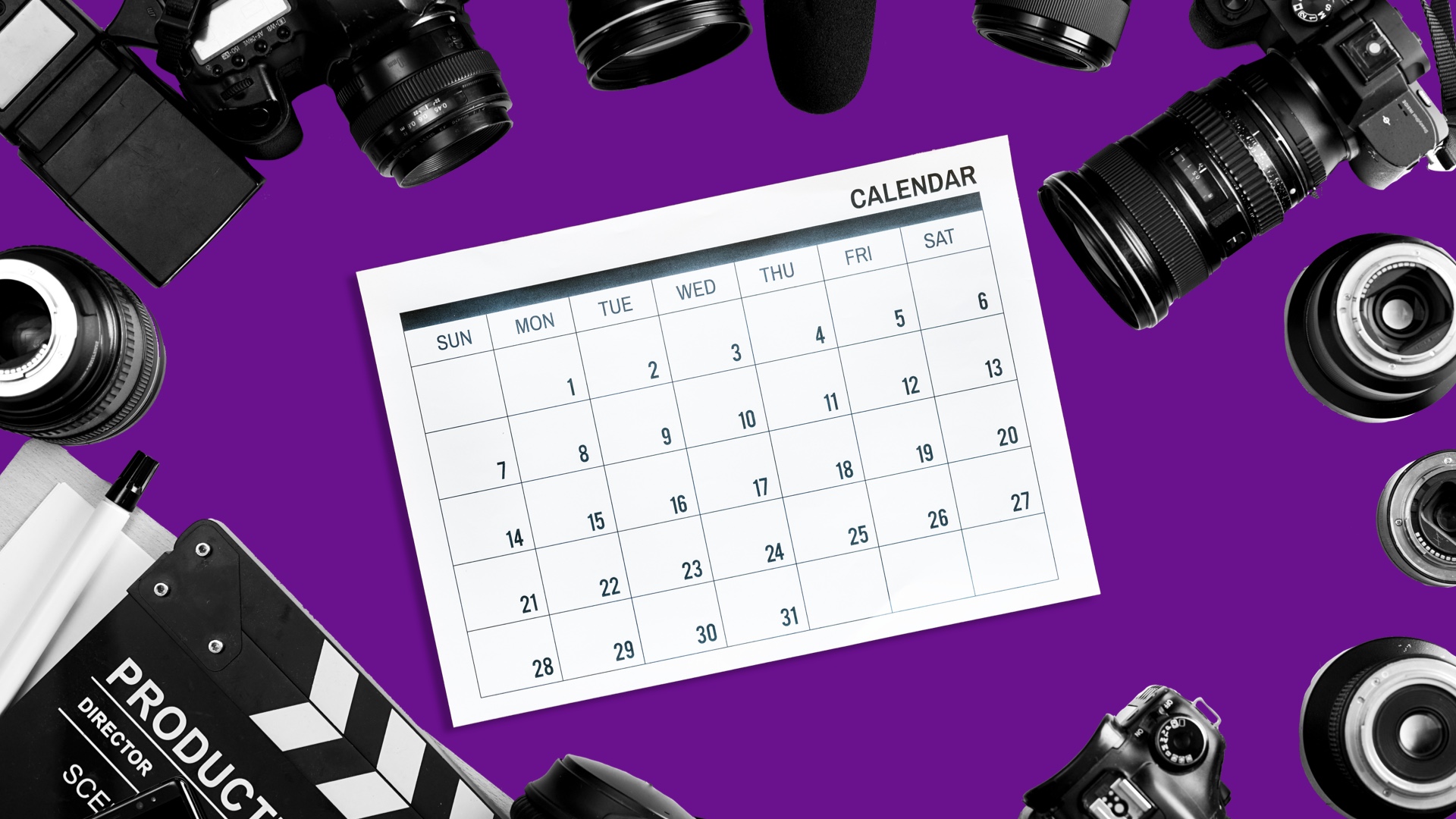5 Stages of Video Production: A Realistic Timeline

If you’re ready to dip your toes into the pool of video production, you might be wondering where to start. As a business owner, you may know that video is one of the most effective marketing tools at your disposal in 2022 and beyond, but the thought of shooting, editing, and posting your own videos may be daunting. Breaking the process into video production stages helps you organize and manage your video projects.
Video Production Stages: Steps & Timeline
You know you need video to appeal to your customers and followers, but it’s not enough to think of an idea and start shooting. Following a set of video production steps helps you get a handle on your budget, schedule, shooting needs, and more. Follow these phases of production to get organized and achieve the best results.
Phase 1: Planning & Development
You wouldn’t start a client project without having a meeting first to understand their needs and create a plan of action, and you shouldn’t shoot a video without a plan either. The first step in the stages of video production is to set your goals. Before you set your budget, brainstorm ideas, and start storyboarding, you need to determine what you want to accomplish with your video.
You might be interested in building a rapport with your existing customers, or you might be more concerned with finding more leads by creating engaging videos for social media. Once you’ve set your goals, you can start coming up with marketing video ideas.
Next, set your budget and timeline. If you’ve ventured into video advertising before, you may think you need hundreds of thousands of dollars to create a 30-second video. But with new developments in video technology, you can stretch your video budget. You might not be able to create a flashy ad laced with celebrity cameos, but you can create high-quality videos that entertain your audience while effectively telling your story and keeping video production costs low.
Here are some ways you can save money without sacrificing video quality:
- Review your historical budgets
- List all the costs associated with your concept including props, sets, locations, etc.
- Repurpose existing items from previous video shoots
- Identify every deliverable in the video production planning stage so you don’t have to go back and reshoot later
After you’ve set your goals, start brainstorming ideas to meet them. For example, if your main goal is to build your brand reputation and credibility, you might shoot some educational videos about your products and services or your industry as a whole.
Once you’ve narrowed your ideas and chosen your favorite, set a budget range. This will help you when you start making a timeline, scouting locations, looking for talent, planning sets, and other production elements.
Phase 2: Pre-Production
With your idea in hand, you can start the next phase of production – pre-production. In this step, you’ll create your video production timeline, your storyboard, your script, and anything else you’ll need to keep production on track once you’ve started shooting.
Storyboards are an essential part of any video production. A storyboard is a visual chart that lays out key scenes of your video. You don’t have to be a stellar artist to make a storyboard. You just need to draw well enough to communicate your shot ideas to your camera operators and graphic designers when you’re including animations. Write your script, and use it to create a visual representation of your script. Put notes under each sketch to keep the production team on the same page. If you have specific ideas for cuts or animation, add them in the notes.
Phase 2 is also where you will line up what you need for production, including your location, talent, props and sets, and anything else that you need before you start shooting. When you make your timeline, set deadlines for getting everything you need so you’re not scrambling on shooting day.
Phase 3: Production
If you have a detailed script and storyboard, phase 3 should go smoothly. This is the stage of video production in which you actually get to shoot your video. Send out your production schedule ahead of time so everyone knows when they need to be on set to create the main video.
You can make this step easier by scouting your location ahead of time to make sure the lighting and acoustics work for your concept. Use your phone or bring a camera and shoot some test footage to see if you need extra lighting and sound equipment.
For a short video, you can shoot your main footage in a day. You might need your film crew to go out at another time to shoot b-roll, which is footage that adds to your video but isn’t the main subject. B-roll usually includes exterior shots and other supplemental footage.
Phase 4: Post Production
This video production phase involves editing your video, sound mixing, adding graphics or animations, and getting the video ready for distribution. In this phase, you’ll cut your video, edit and mix vocals, music, and other sounds, add special effects and enhance the video footage to make sure the video looks polished and professional before you market it.
In this stage, you’ll bring your storyboard to life, laying b-roll, graphics, and animation over your raw video footage. This is one of the most labor-intensive phases of video production, and many business owners outsource post-production to professionals with an eye for creating seamless video.
Phase 5: Marketing & Distribution
Once your video is complete, you will market and distribute it on your social media or other digital platforms. Phase 5 involves figuring out your target audience and deciding how to reach them with your video.
If you’re already using video marketing, you might be familiar with multivariate testing, which is a process you can use to understand how audiences are interacting with your videos. You can use social media and other channels to send your video to small test audiences to learn which channels and keywords get the most hits.
You can also determine how to reach your target audience by looking at the results of previous videos and seeing which are most effective at driving people to your videos.
Learn More: Social Media Video Ad Specs & Placements Guide
How QuickFrame Streamlines the Phases of Production
If seeing the stages of video production laid out still makes you hesitate to try video marketing, consider using QuickFrame to streamline your production timeline. Our video production platform is powered by machine learning to optimize each step of the process, getting you the best video content for your needs.
We collaborate with media partners you’re already using to distribute all types of video content, and we can work with you to determine which of these will be best for your goals. Our data-driven insights will help you choose the right platforms for sharing videos and reaching new customers.
We can also connect you with our network of content makers. You can find the right professionals to create engaging videos that suit your brand and resonate with your target audience. Our approach helps you maximize your marketing dollars to create high-performance campaigns that work.
Stages of Video Production: Final Thoughts
Video marketing is one of the most effective ways to reach your audience, but the cost and technical aspects of video production might have kept you away from this marketing tool. Breaking the process into stages helps you keep your team on track and organized, so you can maximize your budget.
When you know your goals, you can create videos that are realistic and implementable for your needs. If you’re still unsure how to enter the world of video marketing, contact QuickFrame and learn how our streamlined approach to the stages of video production can work for you.
Do More with Video
Learn how we can help you produce more quality videos affordably and at scale.


